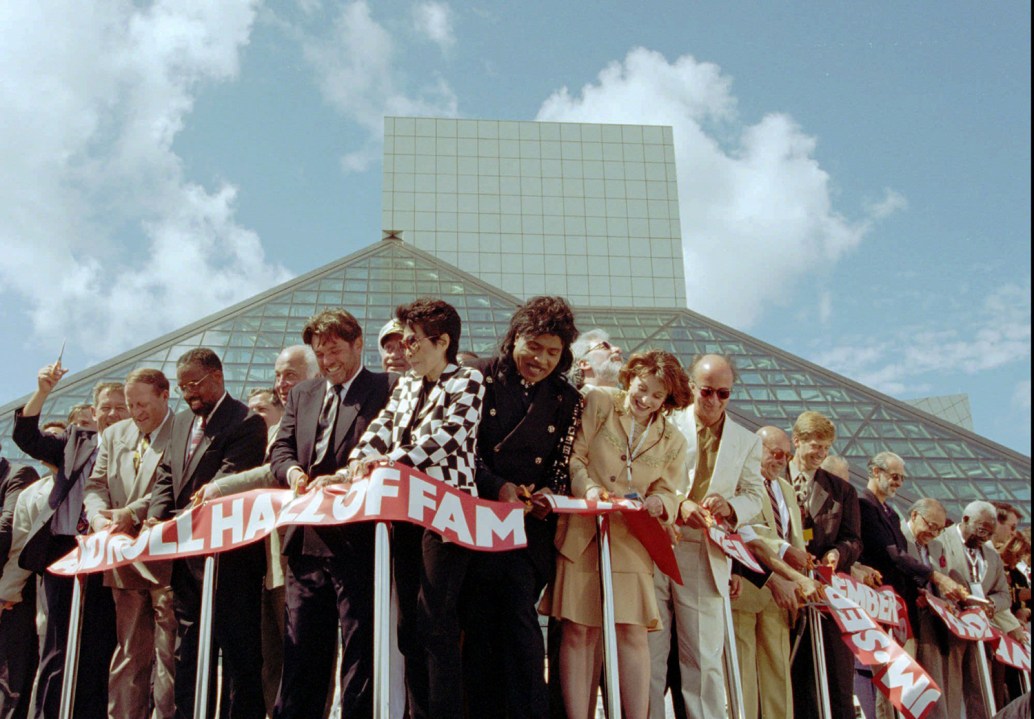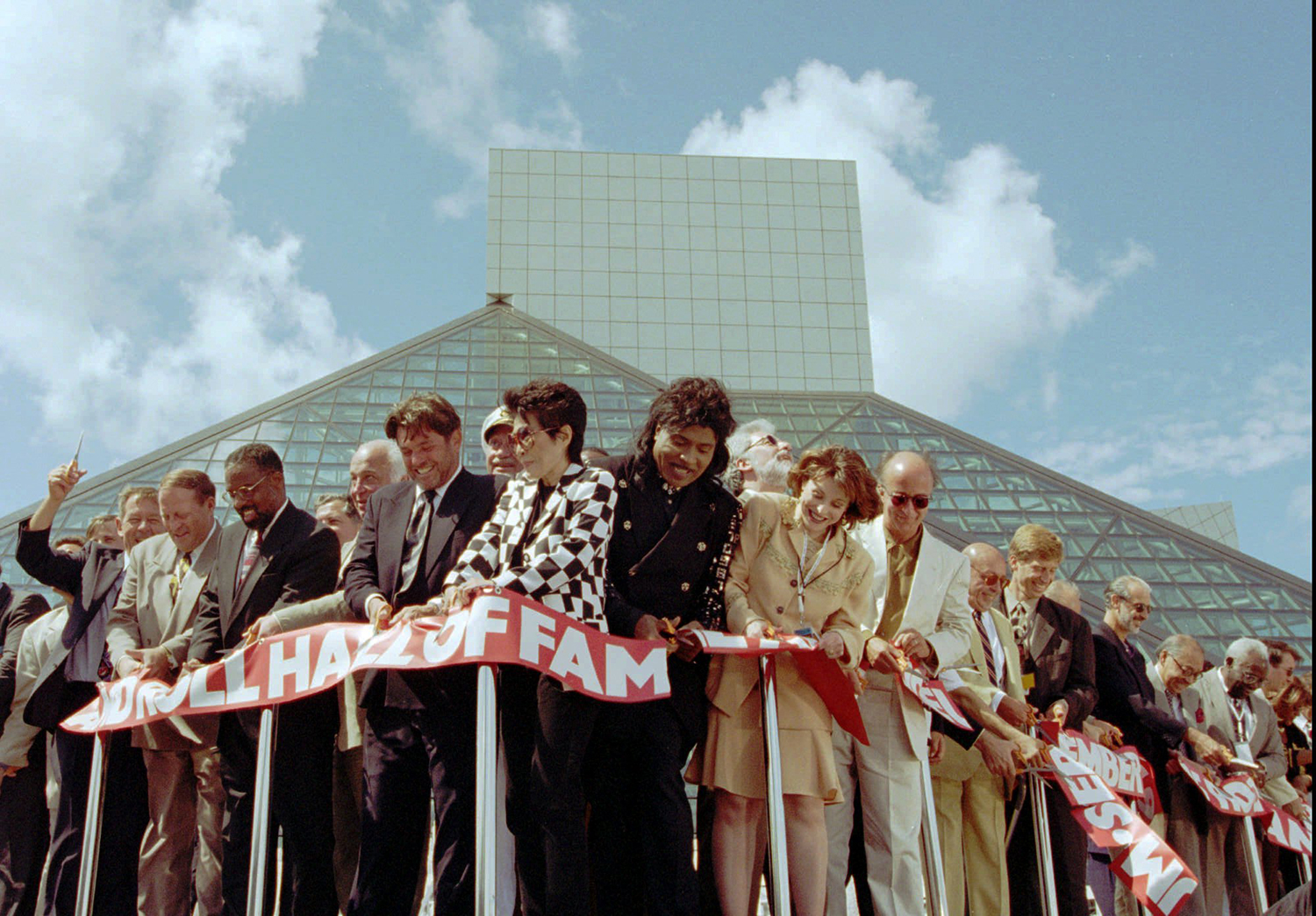There is footage on the internet of Robert Smith, lead singer in the Cure, being interviewed on the occasion of his band being inducted into the Rock and Roll Hall of Fame in 2019. At high pitch and tremendous volume, the host yells up a storm about the incredible honour being bestowed upon the group, while Smith claws at his face, grimaces, and rolls his eyes. ‘Are you as excited as I am?’ she shouts. ‘By the sounds of it, no,’ Smith mutters – speaking, surely, for all of us.
Of all the many reasons to dislike the RRHOF – some of which we’ll get to shortly; and yes, the acronym is one of them – it is the jarring mix of shrieking self-love and august earnestness which rankles most.
Founded in 1983 by Ahmet Ertegun of Atlantic Records, located in the blue collar heartlands of Cleveland, Ohio, the Hall of Fame is overseen by the grandees of US rock culture, among them Jann Wenner, founder of Rolling Stone magazine and Seymour Stein of Sire. Celebrating its 40th year of passing canonical judgment on the rox populi, it sets itself up as the ultimate arbiter of worthy music; a kind of faded denim ‘quality’ mark.
The ‘rock and roll’ part is a misnomer. It’s really the Post-War Popular Music Hall of Fame, covering everything from rap to soul to country, but Rock and Roll is essential to the branding and its self-image. Dolly Parton initially declined her 2022 nomination by pointing out that she is a country artist, not a rock and roll one. They put her in anyway. ‘We know best’, might be the RRHOF motto. In reality, the institution is legacy building at its most sluggish, light years behind the curve. It tells us nothing we don’t already know.
A more honest process would be to pin photos of all the artists on a wall and throw darts at them
Each year, a handful of new inductees join the choir.









Comments
Join the debate for just £1 a month
Be part of the conversation with other Spectator readers by getting your first three months for £3.
UNLOCK ACCESS Just £1 a monthAlready a subscriber? Log in